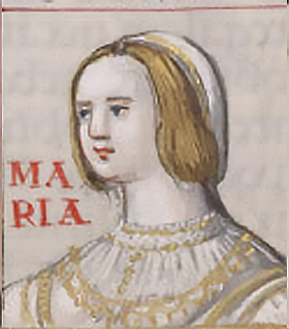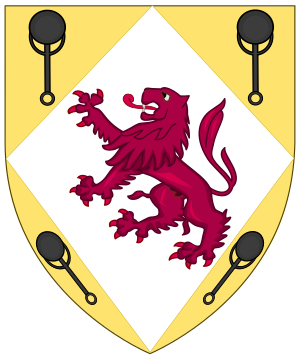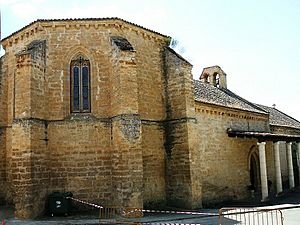María de Padilla facts for kids
Quick facts for kids
María Díaz de Padilla
|
|
|---|---|

Image of Maria de Padilla from 15th century manuscript
|
|
| Born | 1334 Burgos, Spain |
| Died | July 1361 (aged 26–27) Medina-Sidonia, Spain |
| Buried | Sevilla, Spain |
| Noble family | Padilla |
| Spouse(s) | Peter of Castile |
| Issue | Beatrice, Infanta of Castile Constance, Duchess of Lancaster Isabella, Duchess of York Alfonso, Infante of Castile |
| Father | Juan García de Padilla, 1st Lord of Villagera |
| Mother | María de Henestrosa |
María Díaz de Padilla (around 1334 – July 1361) was a very important woman in the life of King Peter of Castile. She was considered his true first wife, even though he married someone else later.
Contents
Her Family Background
María was a noblewoman from Castile, a kingdom in what is now Spain. Her father was Juan García de Padilla, and her mother was María de Henestrosa. Her family came from a place called Padilla de Abajo, near Burgos.
Her uncle, Juan Fernández de Henestrosa, was a close advisor to King Peter for some years. María also had a brother named Diego García de Padilla, who became a leader of a knightly group called the Order of Calatrava.
People at the time described María as "very beautiful, intelligent, and small."
Her Connection with King Peter
King Peter met María in the summer of 1352. He was on a trip to Asturias to fight against his half-brother, Henry. It was probably María's uncle, Juan Fernández de Henestrosa, who introduced them.
At that time, María was living with Isabel de Meneses, who was married to a powerful nobleman named Juan Alfonso de Alburquerque. María and King Peter fell in love and stayed together until she died. Because of their relationship, María's family, the Padillas, gained important positions in the kingdom. For example, her uncle, Henestrosa, became a special judge for nobles.
In 1353, King Peter married Blanche of Bourbon. She was a cousin of King John II of France. This marriage was arranged by his family and advisors. However, King Peter's strong bond with María continued.
María's Children
María and King Peter had four children together. Their three daughters were Beatrice (born 1353), Constance (born 1354), and Isabella (born 1355). They also had a son, Alfonso, who was born in 1359 and was the crown prince of Castile. Sadly, Alfonso died young in 1362.
Two of their daughters married sons of King Edward III of England. Isabella married Edmund of Langley, 1st Duke of York. Constance, the older daughter, married John of Gaunt, 1st Duke of Lancaster. Because of this marriage, John of Gaunt later claimed the throne of Castile for his wife, Constance.
To help bring peace and settle these claims, Constance's daughter, Catherine of Lancaster, later married Henry III of Castile.
Her Death and Burial
María de Padilla passed away in July 1361. It is thought she might have died from the plague, a terrible illness common at that time. However, the old writings about King Peter's reign do not say for sure what caused her death.
She was first buried in the Royal Monastery of Santa Clara in Astudillo. María herself had helped to start this monastery in 1353. But soon after, King Peter ordered that her body be moved. She was then reburied in the Cathedral of Seville, in the Royal Chapel, alongside other members of the royal family.
María in Stories and Art
María de Padilla's life has inspired many creative works:
- Gaetano Donizetti wrote an opera called Maria Padilla in 1841. It tells the story of her relationship with King Peter.
- Rudolf Gottschall wrote a play about her life called Maria de Padilla.
- Beverly Adam wrote a romance novel about her, titled Maria de Padilla, The Secret Queen of Castile.
See also
 In Spanish: María de Padilla para niños
In Spanish: María de Padilla para niños



